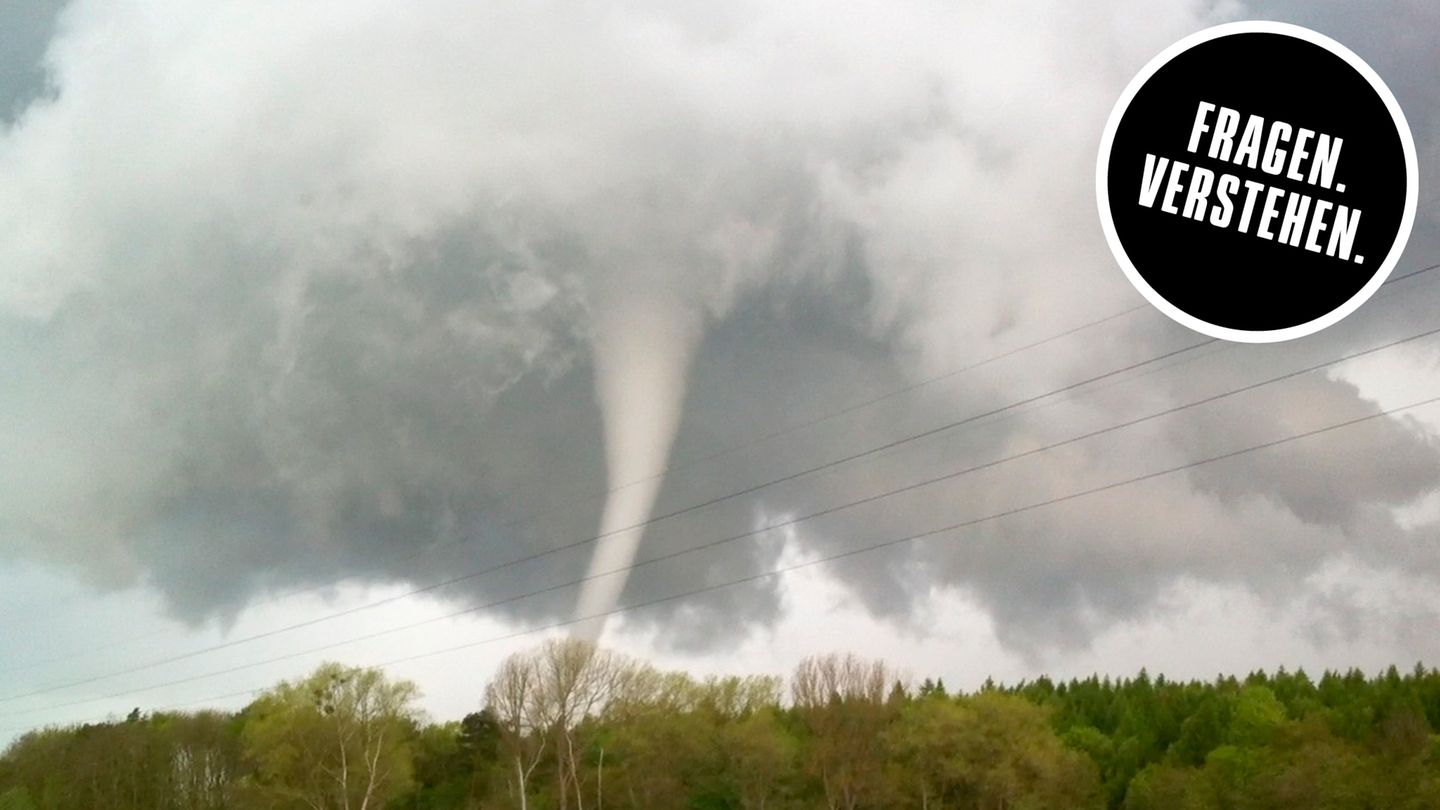Watch the video: This is how dangerous tornadoes occur in Germany.
Real tornadoes here in Germany too. How do they come about? Consider: A storm cloud and wind shear. Everyone knows storm clouds. Wind shear is when the main wind direction changes significantly with height. If wind shear and storm clouds get too close to each other, there is a risk of trouble. Because in the storm cloud, winds rise vertically. When these mix with the horizontal wind shear, the hot, moist air of the storm cloud is twisted.
Similar to a corkscrew. So twisted. That’s why Americans like to call tornadoes twisters. The twisting creates the trunk of the tornado, which is repeatedly accelerated sideways like a top and rotates rapidly. The pull of the trunk is largely unpredictable; its suction and, above all, its wind pressure destroy everything that comes into its path if it is strong enough. Tornadoes are divided into several categories. Using the so-called Fujita scale. The most devastating in America reach wind speeds of more than 400 km/h.
In Germany, tornadoes occur most frequently in the northern German lowlands. And mostly in the lowest categories. So largely harmless. The phenomenon can usually be observed in early summer: when we have the most frequent thunderstorms, local wind pants are in peak season.
Source: Stern
I’m Caroline, a journalist and author for 24 Hours Worlds. I specialize in health-related news and stories, bringing real-world impact to readers across the globe. With my experience in journalism and writing in both print and online formats, I strive to provide reliable information that resonates with audiences from all walks of life.




